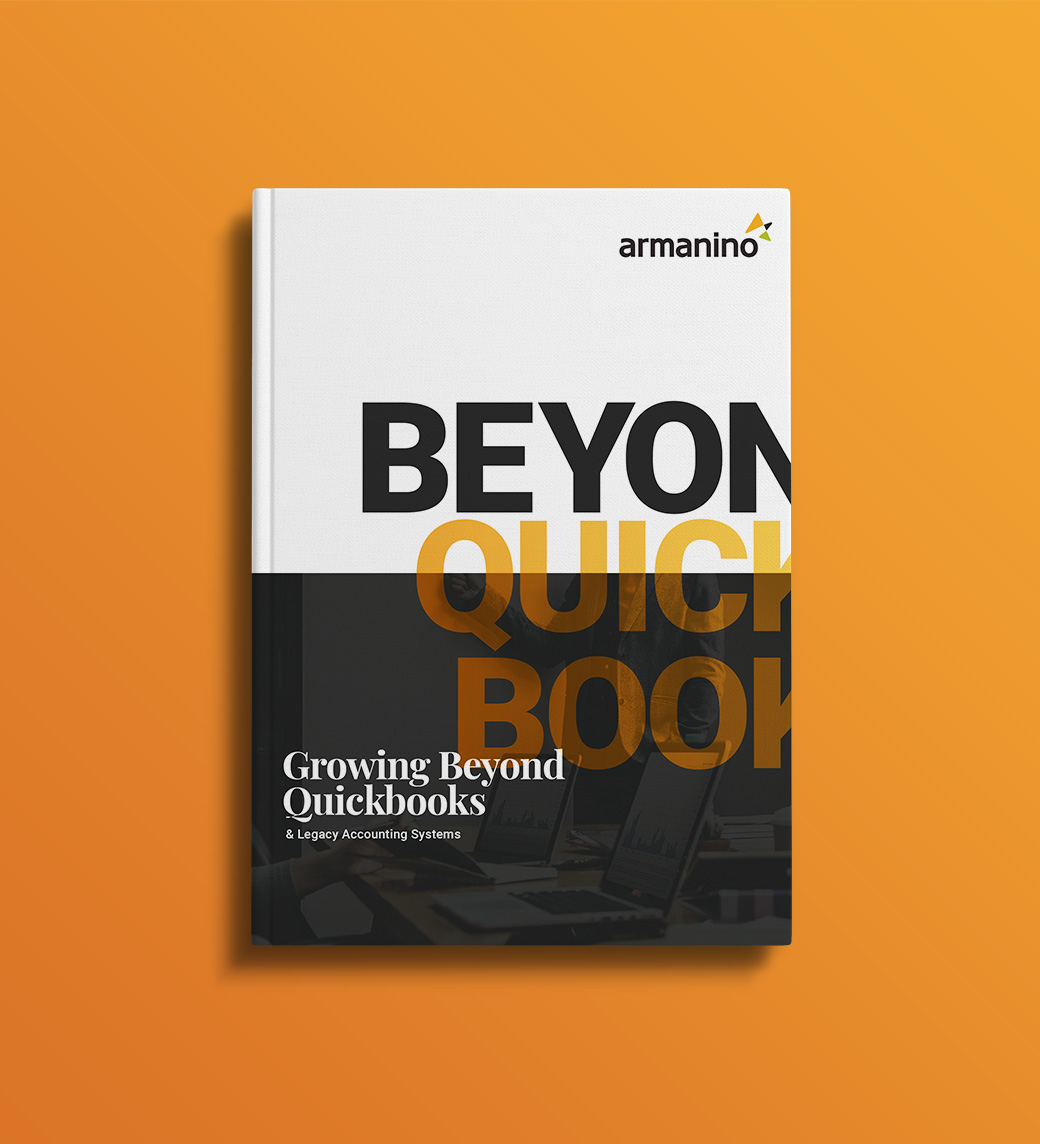Choosing an enterprise resource planning (ERP) system is a decision full of exciting possibility, and, let’s be open, a bit of overwhelm. The right ERP streamlines your financials, automates processes and scales with your business. It gets you out of legacy, rote, manual data entry, disconnected systems and eliminates siloed data.
If you’ve outgrown QuickBooks or you’re dissatisfied with your current ERP, two of the top contenders are Sage Intacct and Oracle NetSuite. Both are cloud-based, powerful and designed to help your business grow — but they have key differences that may make one a better fit for your company.
In our work with business leaders, we walk them through the major differences and nuances between the two ERPs to help them find the best fit and support strategic growth. Here are some considerations on the differences between Sage Intacct and NetSuite to give you a starting point in your selection process.
Business Function and Industry Considerations
Sage Intacct was built for “internet accounting,” hence its name “Intacct,” while NetSuite offers a broader business operations management suite and a stronger focus on inventory and supply chain needs. Your business and industry requirements will determine whether you need a strong accounting-first focus (with integrations to your other operational and CRM applications) or an all-in-one solution like NetSuite, which includes accounting but isn’t built around it.
With its emphasis on financial planning, budgeting and analysis, Sage Intacct is often a better fit for finance-driven organizations that prioritize financial performance and data insights to make strategic decisions. However, if your operational priorities are tied closely to inventory or supply-chain complexity, NetSuite is likely a better choice. It caters heavily to construction, manufacturing, healthcare, retail, health and beauty, restaurants, transportation, wholesalers, energy and government industries.
Sage Intacct Focus Industries
From our experience, these three industries often find Sage Intacct better suited to their business operations:
- Family office leaders manage complex financial structures. Sage Intacct offers multi-entity consolidation, partial ownership reporting, real-time financial visibility and compliance-ready reporting, making it ideal for handling multiple trusts, assets and investments with ease. We see family offices moving rapidly to a cloud-based finance platform like Sage Intacct to enhance security, scale, multi-entity management and integrations with other tools like bill pay and secure transaction management.
- Nonprofits require grant tracking, fund accounting and compliance features. With built-in nonprofit-specific functionality, Sage Intacct helps manage restricted funds and donor contributions while staying audit-ready. The Koret Foundation chose Sage Intacct to modernize its financial management, appreciating the platform’s nonprofit financial operations and advanced reporting capabilities. With Sage Intacct, the Koret Foundation experienced a 75% faster monthly close, streamlined its tax and audit reporting and cut audit costs by 20%.
- Professional services firms rely on project accounting, time tracking and resource management to operate efficiently. Sage empowers service-based businesses with detailed financial insights while modernizing their accounting in the cloud. For example, a mid-sized engineering firm could use Sage Intacct to streamline complex timelines, automate time tracking and optimize team assignments, leading to accurate billing, smarter team utilization and timely project delivery.
However, industry alone doesn’t dictate which ERP is the best fit for your business and team. Let’s look at each solution in more detail and explore some of the less-obvious ERP selection criteria.
Sage Intacct: A Powerful Financial Management Solution
Known for its comprehensive financial management, reporting, compliance, accounting and HR capabilities, Sage Intacct is built specifically for accountants and CFOs.
Sage Intacct Key Features:
- Financial management focus: The platform simplifies multi-entity consolidations, provides real-time financial reporting and streamlines processes through AI-enhanced automation.
- Scalability: Advanced accounting modules, including planning, analytics, payroll and HR, make it easy to scale financial management functions as your company grows.
- Strong integrations: Sage Intacct features 350+ integrations with CRM, payroll, HR, e-commerce and other business applications; its web service API supports over 300 API methods.
- Compliance and audit readiness: Built-in features for GAAP, IFRS, HIPAA and other regulatory requirements help you stay prepared.
- HR & payroll: Automated system updates, data syncs and dashboards eliminate manual data entry and speed up processes.
- AICPA preferred: Sage Intacct is the only ERP preferred by the American Institute of Certified Public Accountants.
Best For:
Small- to mid-sized businesses and nonprofits that need AI-powered accounting functionality for real-time insights and automated processes that free them to focus on growth.
NetSuite ERP: A Core Solution With Flexible Business Operations Management Capabilities
NetSuite is an all-in-one business operations management system with modules that cover everything from accounting to HR to e-commerce and more. The core ERP handles accounting, order processing, inventory management, production, supply chain and warehouse operations. All other functionality are additional modules that integrate with the core ERP.
NetSuite ERP Key Features:
- Real-time dashboards and reporting: This provides visibility into operations and financial performance across the organization.
- Scalable and customizable: The core ERP platform plus additional modules, such as sales and customer service, professional services, HR, global business management, CRM and more allow you to tailor the NetSuite platform to broader business needs.
- Multi-entity and multi-currency capabilities: These features make it easy to manage multiple subsidiaries, business units and legal entities across the globe.
Best For:
- Mid-sized businesses to enterprises that want to simplify business operations management with one provider rather than individual solutions from different vendors.
Sage Intacct vs. NetSuite: Feature Comparison Chart
Feature
Sage Intacct
NetSuite
Implementation timeline
3-6 months
6+ months
CRM included
No, integration-only
Yes
Multi-entity consolidation
Yes
Yes
Automatic updates
Yes
Yes
Marketplace for add-on solutions
Yes
Yes
Real-time, comprehensive reporting
Yes
Yes
Subscription billing & revenue recognition
Advanced
Basic
Real-time collaboration
Yes
No
General ledger outlier detection
Yes
No
Native Salesforce integration
Yes
No
Interactive reporting tools
Yes
No
Sage vs. NetSuite: Less Obvious Selection Criteria
When choosing between Sage Intacct and NetSuite, it’s important to focus on features and cost — but there are some less obvious factors that can make a big impact:
Long-term flexibility
- NetSuite locks you into its ecosystem, and leaving can be costly and complex.
- Sage Intacct offers additional modules and integrations with their ecosystem of software partner solutions as you scale.
Total cost beyond licensing
- NetSuite often requires higher consulting and support costs over time.
- Sage Intacct may need third-party integrations that increase costs.
Implementation complexity and timeline
- NetSuite implementations can take 6+ months due to its extensive modules.
- Sage Intacct typically takes 3-6 months to deploy, but extensive customizations may slow things down.
Reporting
- NetSuite has strong built-in analytics, but exporting and customizing reports can be challenging.
- Sage Intacct has stronger multi-entity consolidations and more financial reporting flexibility.
Vendor lock-in and ecosystem dependencies
- NetSuite (owned by Oracle) encourages you to use Oracle products — potentially limiting flexibility.
- Sage Intacct may require third-party apps and tools for full ERP functionality.
Software updates
Note: Software vendors update their solutions to meet the needs of their largest customer base, so keep this in mind when choosing your ERP vendor.
- NetSuite offers two updates per year. In their last few releases, they enhanced their operational modules (inventory, material requirements planning, etc.) with few accounting updates.
- Sage Intacct offers four updates per year. Over their last several releases, they have frequently enhanced their accounting modules based upon feedback and customer voting.
The Bottom Line: Choose an ERP Based on Your Needs
NetSuite is ideal if you need a comprehensive solution for managing your overall operations: inventory, order management, CRM, project management alongside financial reporting and analysis.
Sage Intacct is a better choice if financial management and performance are central to your operations and decision-making. Its focus on budgeting, forecasting and compliance saves your finance team time, makes compliance easier and drives performance across the organization.
Need Help Deciding Which ERP To Choose?
Selecting the best cloud ERP for your business will depend on your business goals, structure, industry and growth plans. Explore our step-by-step ERP selection guide or learn how our ERP implementation experts can help you make an informed, ROI-driven decision.



